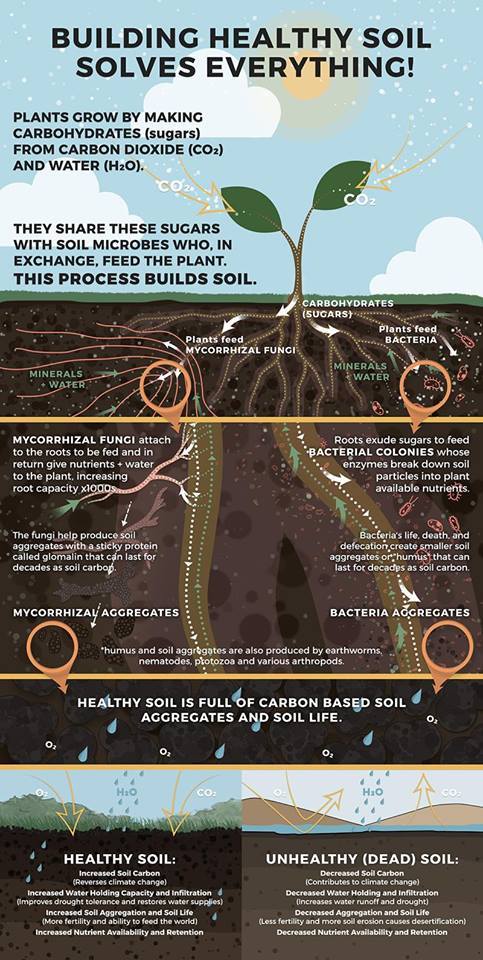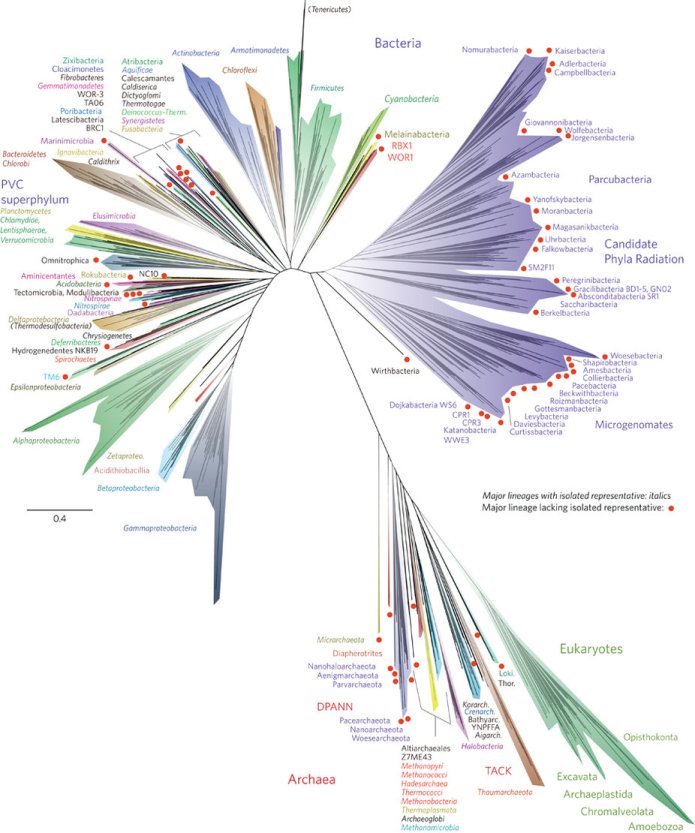Soil Loss
Soil Crisis Across the Globe
- "Treating Soil Like Dirt" Is Not a Sustainable Way to Grow
We’re treating soil like dirt. It’s a fatal mistake, as our lives depend on it...
by George Monbiot (*GreenPolicy360 'writer-to-follow')
Imagine a wonderful world, a planet on which there was no threat of climate breakdown, no loss of freshwater, no antibiotic resistance, no obesity crisis, no terrorism, no war. Surely, then, we would be out of major danger? Sorry. Even if everything else were miraculously fixed, we’re finished if we don’t address an issue considered so marginal and irrelevant that you can go for months without seeing it in a newspaper.
It’s literally and – it seems – metaphorically, beneath us. To judge by its absence from the media, most journalists consider it unworthy of consideration. But all human life depends on it. We knew this long ago, but somehow it has been forgotten. As a Sanskrit text written in about 1500BC noted: “Upon this handful of soil our survival depends. Husband it and it will grow our food, our fuel and our shelter and surround us with beauty. Abuse it and the soil will collapse and die, taking humanity with it.”
The issue hasn’t changed, but we have. Landowners around the world are now engaged in an orgy of soil destruction so intense that, according to the UN’s Food and Agriculture Organisation, the world on average has just 60 more years of growing crops. Even in Britain, which is spared the tropical downpours that so quickly strip exposed soil from the land, Farmers Weekly reports, we have “only 100 harvests left”.
To keep up with global food demand, the UN estimates, 6m hectares (14.8m acres) of new farmland will be needed every year. Instead, 12m hectares a year are lost through soil degradation. We wreck it, then move on, trashing rainforests and other precious habitats as we go. Soil is an almost magical substance, a living system that transforms the materials it encounters, making them available to plants. That handful the Vedic master showed his disciples contains more micro-organisms than all the people who have ever lived on Earth. Yet we treat it like, well, dirt...
○ ○ ○ ○ ○ ○ ○ ○ ○ ○ ○ ○ ○ ○ ○ ○ ○ ○ ○ ○ ○ ○ ○ ○
Arable land v Non-Arable (Infertile) land
Check an arable land map for your country/region/watershed
Losing the Land, Unsustainable Ag
Loss of Fertile Land Fuels ‘Looming Crisis’ Across Africa
Climate change, soil degradation and rising wealth are shrinking the amount of usable land in Africa. But the number of people who need it is rising fast
○ ○ ○ ○ ○ ○ ○ ○ ○ ○ ○ ○ ○ ○ ○ ○ ○ ○ ○ ○ ○ ○ ○
If Soil Degradation Continues
Generating three centimeters of top soil takes 1,000 years, and if current rates of degradation continue all of the world's top soil could be gone within 60 years...
About a third of the world's soil has already been degraded, Maria-Helena Semedo of the Food and Agriculture Organization (FAO) told a forum marking World Soil Day.
The causes of soil destruction include chemical-heavy farming techniques, deforestation which increases erosion, and global warming. The earth under our feet is too often ignored by policymakers, experts say.
Unless new approaches are adopted, the global amount of arable and productive land per person in 2050 will be only a quarter of the level in 1960, the FAO reported, due to growing populations and soil degradation...
Soils play a key role in absorbing carbon and filtering water, the FAO reported. Soil destruction creates a vicious cycle, in which less carbon is stored, the world gets hotter, and the land is further degraded.
"We are losing 30 soccer fields of soil every minute, mostly due to intensive farming," Volkert Engelsman, an activist with the International Federation of Organic Agriculture Movements told the forum at the FAO's headquarters in Rome.
"Organic (farming) may not be the only solution but it's the single best (option) I can think of."
The Secret to Fertility is in the Life of the Soil
Greening Agriculture / Eco-Agriculture: Greening the Fields
-- From The Little Green Book @GreenPolicy360
Environmentally-friendly agriculture/farming/gardening/green best practices
"Think of Soil as an Ecosystem of Living Organisms"
A broken food system is destroying the soil and fueling health crises as well as conflicts, warns Professor John Crawford of the University of Sydney.
Watch Professor John Crawford / Sustainability and Complex Systems Director --
Microbiomes
"Soil Depletion, Soil Restoration"
Recovering/Renewing/Restoring the Life of the Soil
https://agenda.weforum.org/2012/12/what-if-soil-runs-out/
http://world.time.com/2012/12/14/what-if-the-worlds-soil-runs-out/
Q&A with Professor Crawford
Is soil really in danger of running out?
A rough calculation of current rates of soil degradation suggests we have about 60 years of topsoil left. Some 40% of soil used for agriculture around the world is classed as either degraded or seriously degraded – the latter means that 70% of the topsoil, the layer allowing plants to grow, is gone. Because of various farming methods that strip the soil of carbon and make it less robust as well as weaker in nutrients, soil is being lost at between 10 and 40 times the rate at which it can be naturally replenished. Even the well-maintained farming land in Europe, which may look idyllic, is being lost at unsustainable rates...
Agriculture accounts for 70% of our fresh water use: we pour most of our water straight onto the ground. If soil is not fit for purpose, that water will be wasted, because it washes right through degraded soil and past the root system. Given the enormous potential for conflict over water in the next 20-30 years, you don’t want to exacerbate things by continuing to damage the soil, which is exactly what’s happening now.
How does soil erosion happen?
Soil is a living material: if you hold a handful of soil, there will be more microorganisms in there than the number of people who have ever lived on the planet. These microbes recycle organic material, which underpins the cycle of life on Earth, and also engineer the soil on a tiny level to make it more resilient and better at holding onto water. Microbes need carbon for food, but carbon is being lost from the soil in a number of ways.
Simply put, we take too much from the soil and don’t put enough back. Whereas the classic approach would have been to leave stubble in the field after harvest, this is now often being burned off, which can make it easier to grow the next crop; or it’s being removed and used for animal feed. Second, carbon is lost by too much disturbance of the soil by over-ploughing and by the misuse of certain fertilizers. And the third problem is overgrazing. If there are too many animals, they eat all the plant growth, and one of the most important ways of getting carbon into the soil is through photosynthesis.
What happens if this isn’t addressed?
There are two key issues. One is the loss of soil productivity. Under a business-as-usual scenario, degraded soil will mean that we will produce 30% less food over the next 20-50 years. This is against a background of projected demand requiring us to grow 50% more food, as the population grows and wealthier people in countries like China and India eat more meat, which takes more land to produce weight-for-weight than, say, rice.
Second, water will reach a crisis point. This issue is already causing conflicts in India, China, Pakistan and the Middle East. Before climate change and food security really hit, the next wars are likely to be fought over unsustainable irrigation. Even moderately degraded soil will hold less than half of the water held by healthy soil in the same location. If you’re irrigating a crop, you need water to stay in the soil close to the plant roots. However, a staggering paper was published recently indicating that nearly half of the sea level rise since 1960 is due to irrigation water flowing straight past the crops and washing out to sea.
Who will be impacted the most?
Soil erosion is most serious in China, Africa, India and parts of South America. If the food supply goes down, then, obviously, the price goes up. The crisis points will hit the poorest countries hardest...
○ ○ ○ ○ ○ ○ ○ ○ ○ ○ ○ ○ ○ ○ ○ ○ ○
Soil and Water: An Overview of the US
- The US Southwest Has Serious Water-Soil Problems -- and the Ogallala Is in Danger
- http://research.msu.edu/tag/ogallala-aquifer/
- http://research.msu.edu/saving-the-great-plains-water-supply-2/
- Large areas of the Ogallala Aquifer, one of the most important sources of water for agricultural crops in the United States, are at risk of drying up if the aquifer continues to be drained at its current rate.
- The Ogallala, also known as the High Plains Aquifer (HPA), spans from Texas to South Dakota and provides water to grow $35 billion in crops each year. However, since the 1950s, when high-volume pumping began, the HPA’s saturated volume has declined by roughly the volume of Lake Erie...
○
According to the U.S. Geological Survey, water levels across most of the Ogallala have fallen at least five feet since farmers began irrigating the Great Plains in the 1940s. Almost one-fifth of the area has dropped at least 25 feet, while 11% has lost 50 feet or more.
○ ○ ○ ○ ○ ○ ○ ○ ○ ○ ○ ○ ○ ○ ○ ○ ○ ○ ○ ○ ○ ○ ○ ○ ○ ○ ○
Aquifer Depletion, Drought -- Soil, Organic Impacts and Loss
http://www.greenpolicy360.net/w/Aquifers
Aquifer depletion worldwide mapping
Depletion & Runoff Pollution
○
- Agriculture
- Alternative Agriculture
- Atmospheric Science
- Biodiversity
- Biosphere
- Climate Change
- Earth Science
- Ecology Studies
- Environmental Full-cost Accounting
- Environmental Security
- Extinction
- Farm-Related Policies
- Food-Related Policies
- Genetic Engineering
- Green Politics
- Land Ethic
- Microbiology
- Microorganism
- Organic Food
- Permaculture
- Pesticides
- Resilience
- Strategic Demands
- Sustainability
- Sustainability Policies
- United Nations
- Water


